Behind the Scenes: Re-Cataloging a 17th-Century Geography
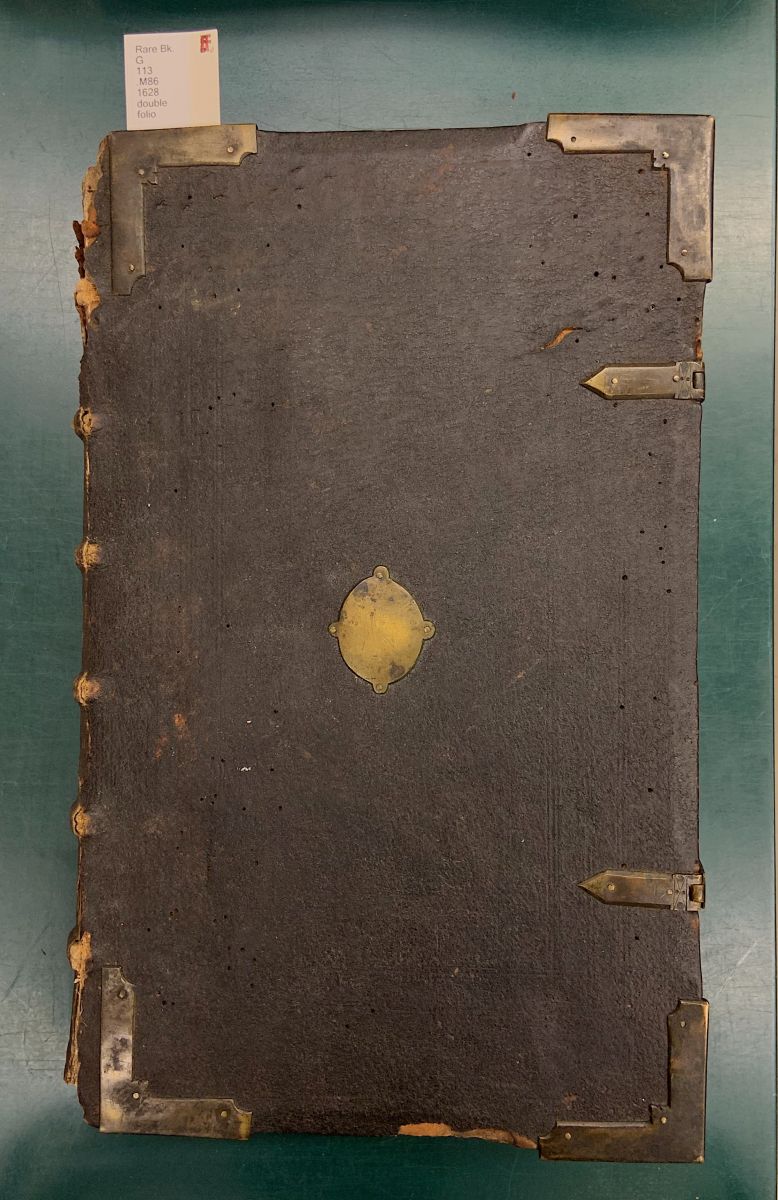
Lynne Fors, Cataloger, shares an inside look into reclassifying and describing an early geography of the world. Read on to learn more about the intricate woodcut maps, portraits, and diagrams used to illustrate the world as it was known in 1628.
Recently, Special Collections asked the catalogers to reclassify the double folio collection from the Dewey classifications to the Library of Congress classification used in the rest of W&M Libraries’ collections. This process involves reviewing the current record in the catalog and reexamining the book in hand for details that were not previously included. Example of the types of details used to enhance these records include binding descriptions, notes about missing pages or damage, updated subject headings, place of publication or manufacture, and the inclusion of printers, binders, or other associated persons and entities.
Cosmographia, das ist: Beschreibund der gantzen Welt […] by Sebastian Münster, published in Basel, Switzerland in 1628, proved to be a surprising delight to the cataloging department. This particular book is bound in wooden boards with metal bosses, metal clasps, and raised bands on the spine. Title pages during the handpress period are sometimes printed in red and black ink and may be accompanied with an engraved decorative title page.
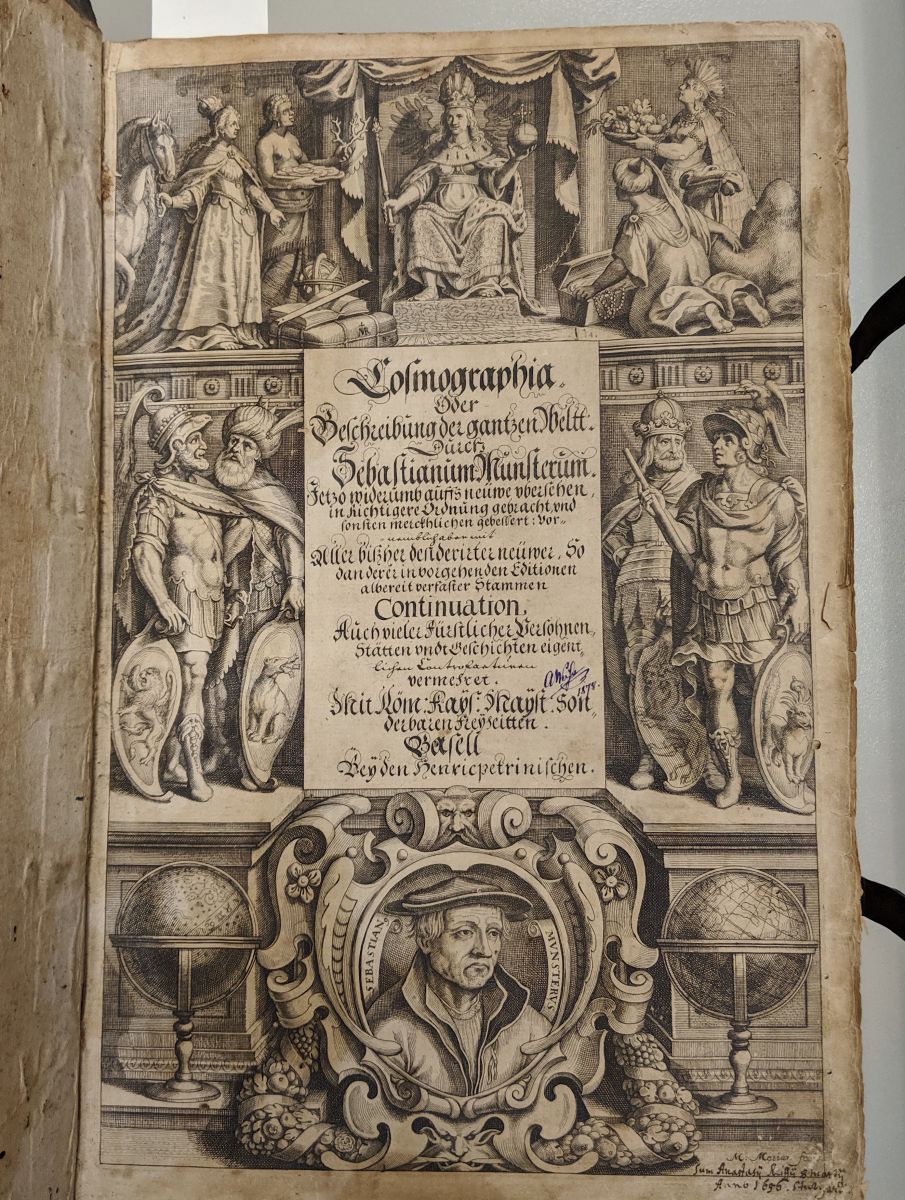
It is an early geography of the world with woodcut maps, portraits, diagrams, and illustrations dating from the 16th century depicting the world as it was known at the time of publication in 1628. Some of the woodcut images are dated circa 1548 from earlier printings of Cosmographia.
Münster includes the major cities and countries of Europe, such as Paris, Rome, and London with brief histories, in addition to the rest of the globe. Descriptions of far off places, such as Asia, Africa and the Americas include detailed illustrations of the flora and fauna of those locales as well as the inhabitants. Some of the maps are fanciful rather than realistic geographic representations.
Interesting images of note found in Cosmographia include a rendering of a rhinoceros from Asia that looks like it is clad in battle armor, Cleopatra wearing 16th- or 17th-century dress with an asp around her lifted arm from the book's Egypt section, a bat from the Americas section, a representation of an indigenous person from Libya, and the gruesome results of Vlad the Impaler’s atrocities in the eastern European section.

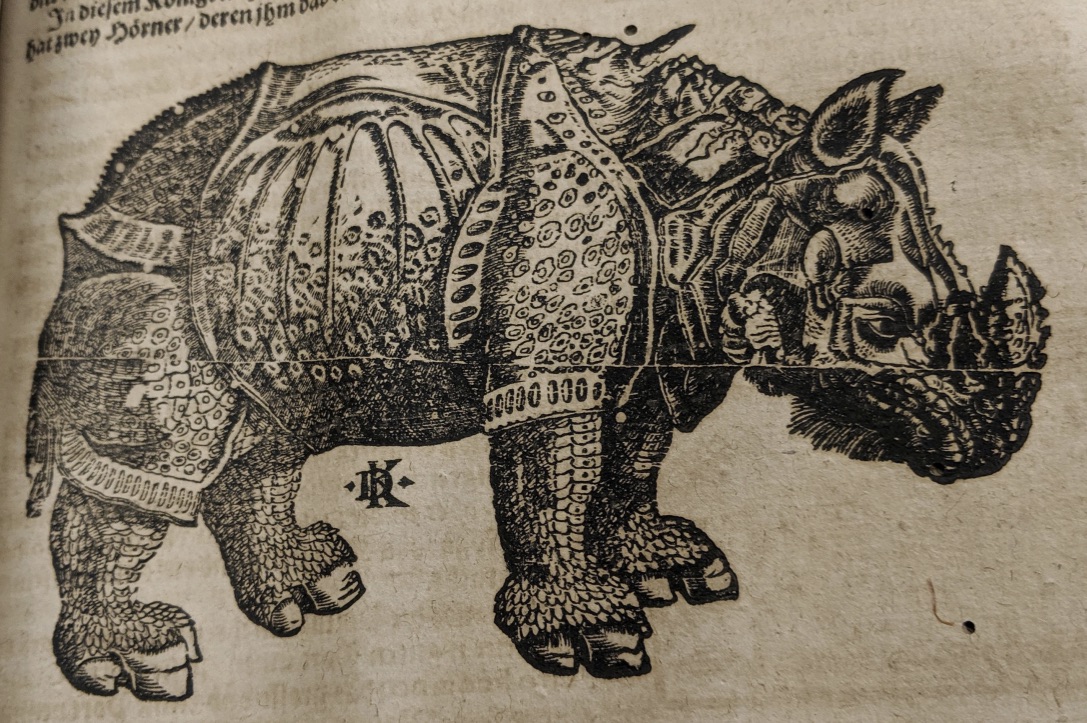
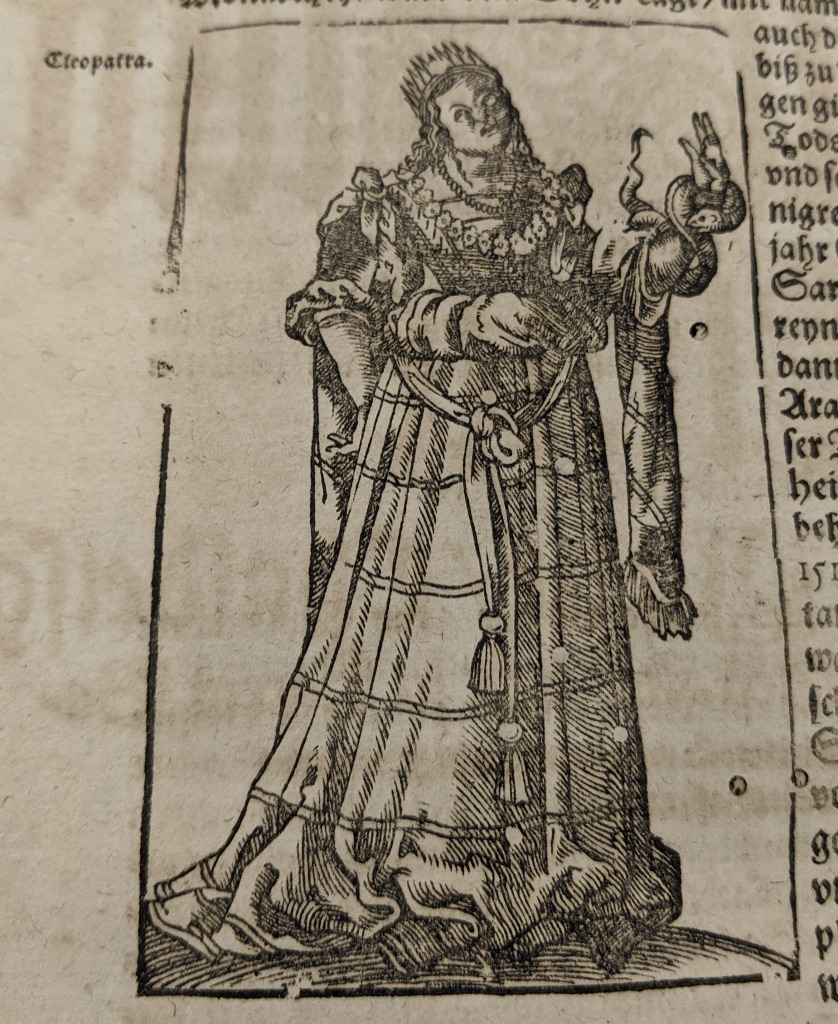
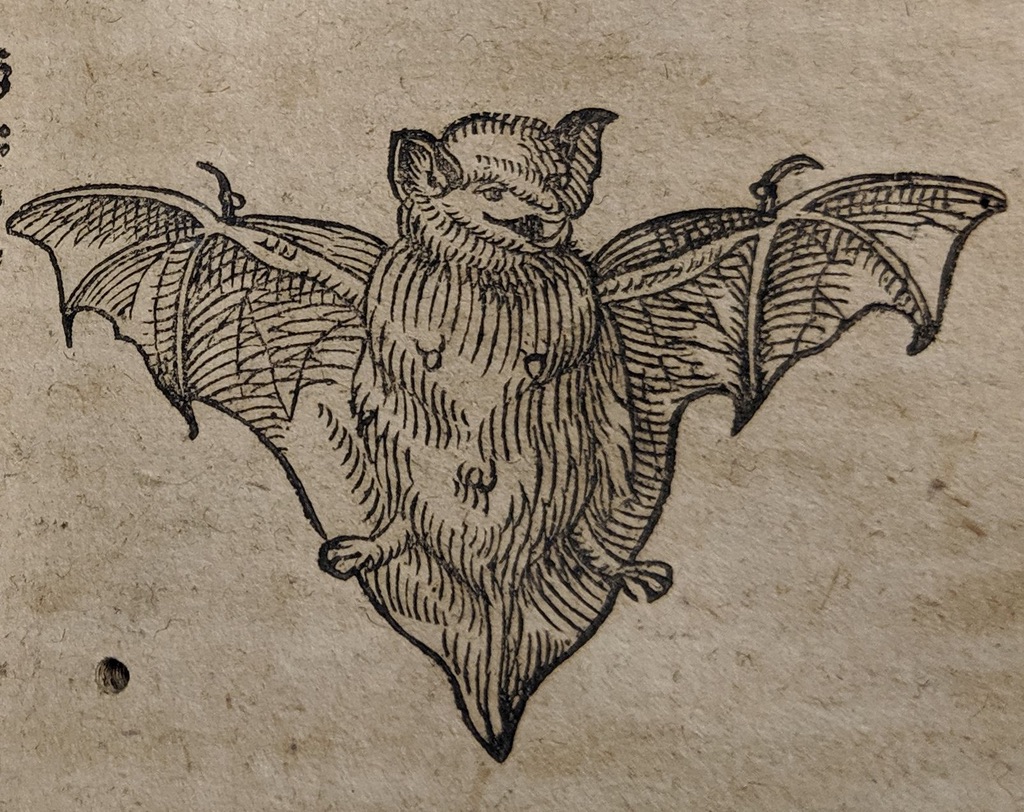
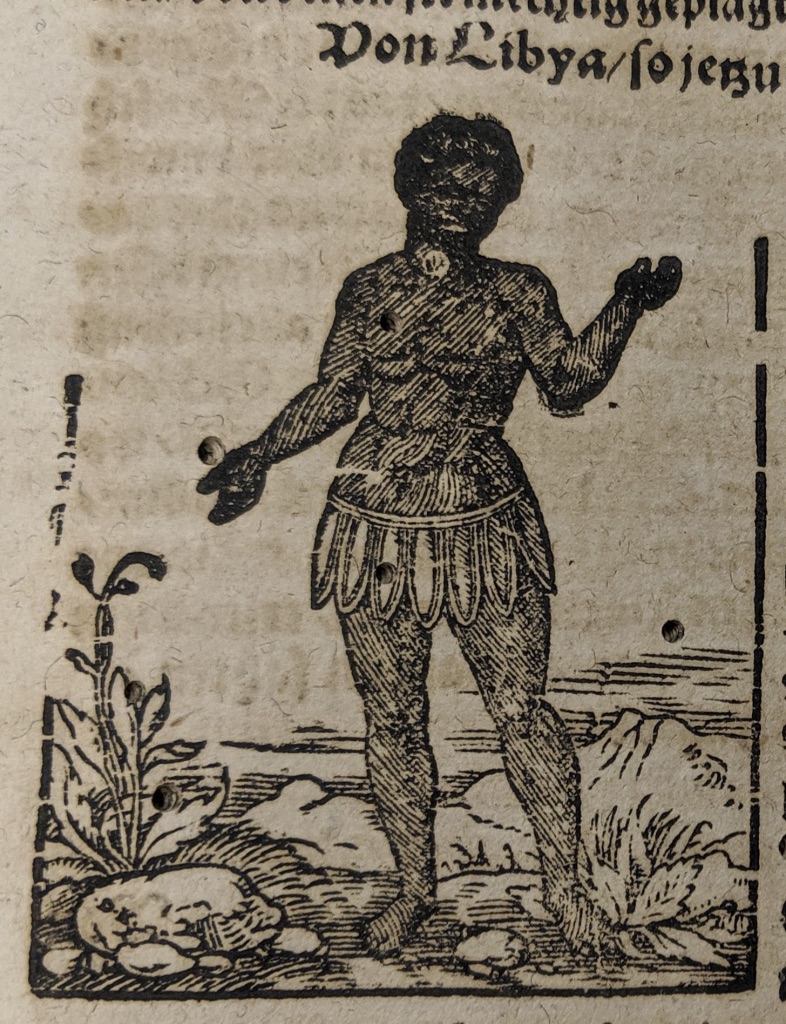
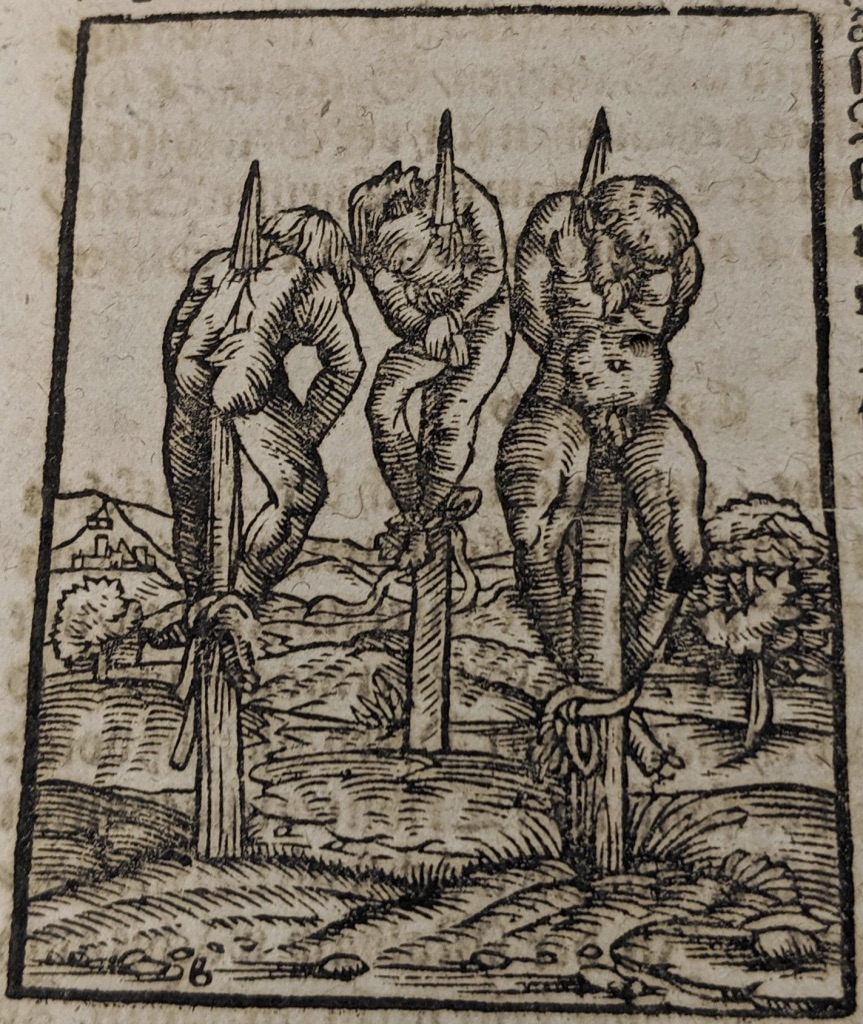
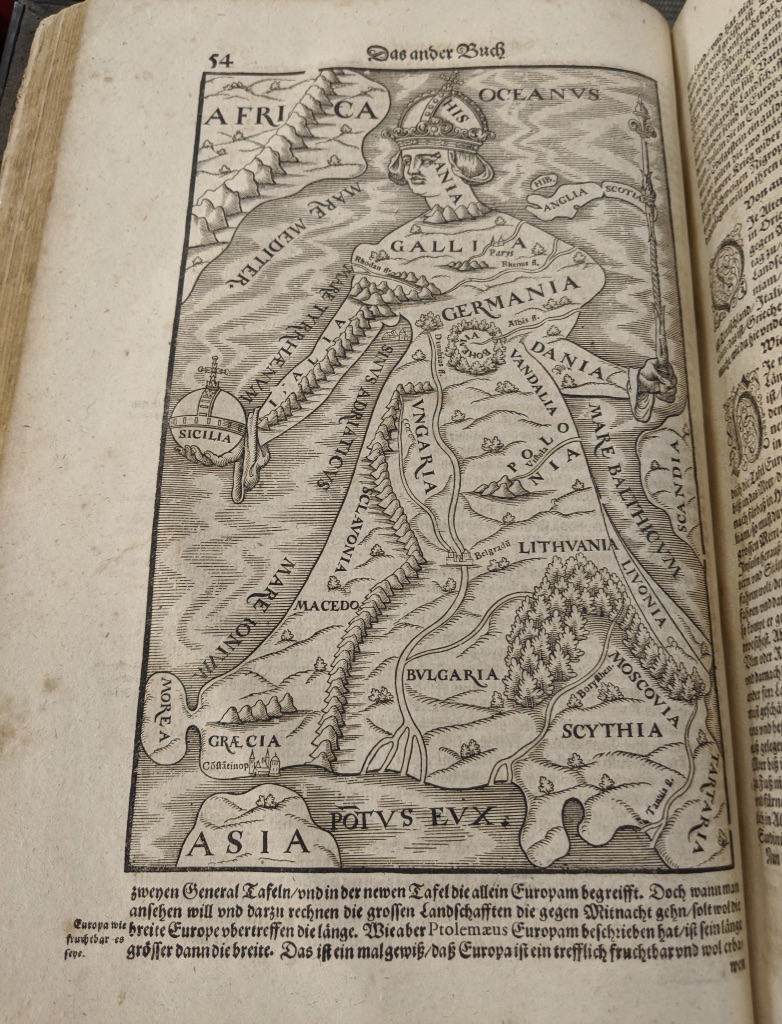
References and More to Explore:
Library catalog entry for Cosmographia, das ist: Beschreibund der gantzen Welt […], featuring its new call number: G113 .M86 1628 double folio.
Learn more about the life and work of Sebastian Münster.
Explore some differences between Dewey Decimal Classification and Library of Congress Classification with this infographic from the National Library Board.

